For thousands of years, pottery has been more than just a vessel; it’s a tangible link to our past. From ancient storage jars to exquisite porcelain dinnerware, ceramic objects tell the silent stories of human civilization, trade, and art. If you have ever found yourself fascinated by a centuries-old bowl or curious about an antique vase at a market, this pottery identification guide will help you understand how experts recognize and evaluate ancient ceramics around the world.

1. What is ancient pottery?
Ancient pottery refers to ceramic objects created by early civilizations for everyday use, ritual purposes, or artistic expression. These include bowls, jars, plates, vases, and figurines crafted from natural clay and fired in kilns.

The three main types of pottery:
To begin your identification journey, it’s essential to understand the three fundamental types of ceramic bodies, which are primarily distinguished by their clay composition and firing temperature:
- Earthenware: The earliest and most common type, fired at lower temperatures (600°C to 1200°C). It remains porous after firing unless glazed. Terracotta is a famous reddish-brown variety of unglazed earthenware.
- Stoneware: Fired at a higher temperature (around 1100°C to 1200°C). It is denser, non-porous (vitrified), and much stronger than earthenware, prized for its durability.
- Porcelain: The hardest and most delicate, fired at the highest temperatures (up to 1400°C). True porcelain is translucent, fine-grained, and often pure white. It was first perfected in China and represents the pinnacle of ancient ceramic technology.
Understanding these basic differences in weight, hardness, and translucency is the very first step in any pottery identification guide.
See more: Beginner’s guide to recognizing italian ceramic marks
2. Experts ways to identify ancient pottery
Determining if a piece is a genuine ancient artifact or a modern reproduction requires a keen eye and attention to the subtle physical cues that develop over centuries. Here are the key aspects experts scrutinize when they identify ancient ceramics:
2.1. Look for iron rust spots
Iron rust spots are often visible on ancient pottery surfaces. These small reddish or brown marks indicate oxidation of iron particles within the clay during firing — a feature commonly seen in authentic ancient pieces.
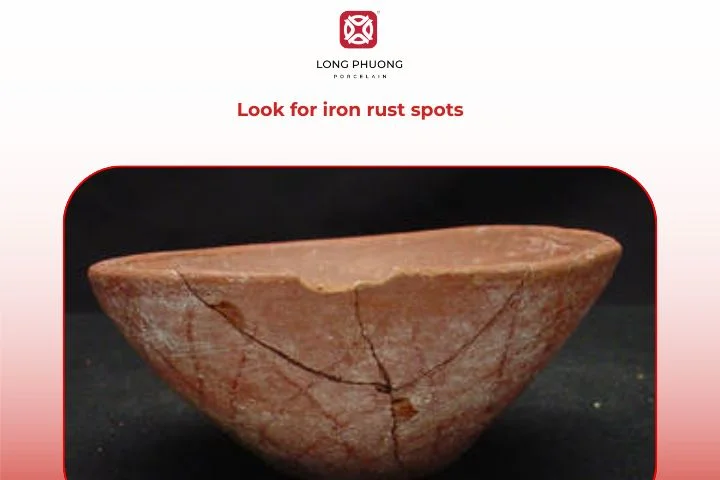
2.2. Check for peeling or missing glaze
Over centuries, the glaze layer may peel or flake off due to temperature changes or burial conditions. A well-preserved but naturally aged glaze helps determine the pottery’s authenticity and age.
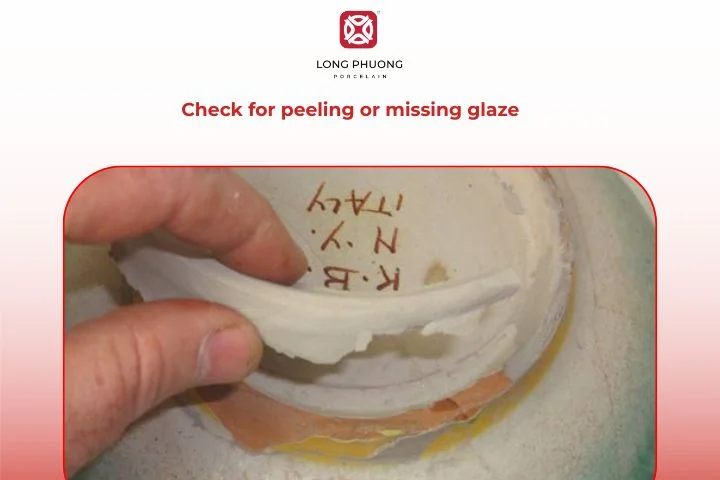
2.3. Notice the crackle lines
Fine crackle lines (called crazing) are another hallmark of age. These form naturally over time as the glaze contracts and expands differently from the clay body beneath. In this pottery identification guide, such patterns often reveal both material quality and firing temperature.
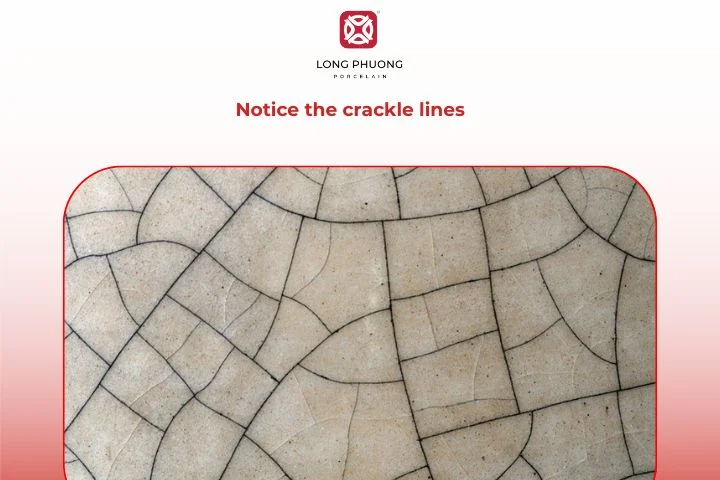
2.4. Examine the shrinkage of the glaze
The firing process causes the ceramic body and the glaze to shrink. In ancient, hand-finished pieces, this shrinkage often leaves tiny, exposed areas, especially near the foot rim or the junction of the body and the handle – where the glaze pulls back slightly.

These glaze shrinkage areas on older ceramics often show signs of wear, abrasion, or subtle discoloration from centuries of handling and environmental exposure, serving as a reliable element of the pottery identification guide.
2.5. Check the level of impurities
As mentioned, pre-industrial pottery production used less refined clays. The presence of tiny inclusions, minute stones, sand, or other minerals (impurities) in the ceramic paste is a powerful sign of age.
Examine an unglazed area, like the foot rim: older pottery tends to have a coarser, less uniform paste compared to modern, machine-refined porcelain.
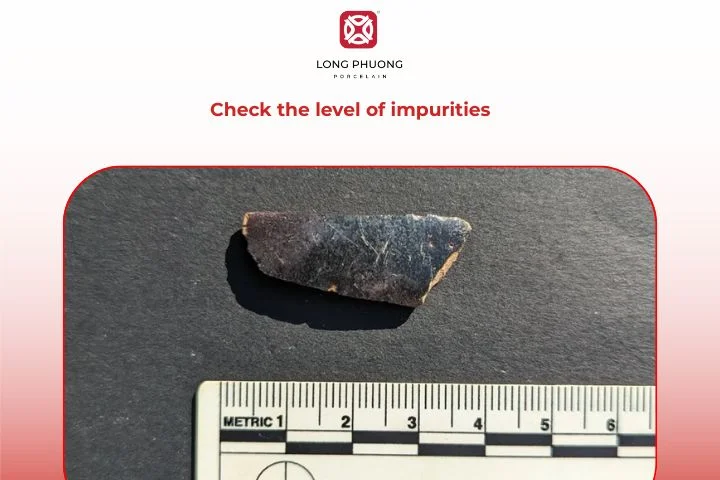
2.6. Look for seashell or marine encrustation
Artifacts recovered from shipwrecks or coastal sites may bear traces of marine life, such as seashell imprints or coral deposits — key evidence of long-term underwater preservation.

2.7. Observe glaze deterioration
A particularly interesting sign of age is glaze deterioration that manifests as iridescence or a silvery sheen. This effect is caused by a chemical reaction where alkali metals leach out of the glaze and form micro-layers of silicates that scatter light.

This chemical alteration is a slow process that takes centuries to develop naturally, making it a reliable feature when you try to how to pottery identification guide ancient ceramics.
3. 4 reliable methods to identify ancient ceramics
Beyond visual observation, experts rely on several reliable methods to determine the authenticity of pottery. This pottery identification guide highlights four approaches you can apply or discuss with specialists.
3.1. Based on experience and knowledge
This is the expert’s method, the heart of any professional pottery identification guide. It relies on a profound understanding of ceramic history and typology. An experienced appraiser can often identify a piece almost instantly based on:
- Shape and Form: Comparing the object’s silhouette to known historical styles (e.g., a Han Dynasty Hu vase or a Ming Dynasty Meiping).
- Manufacturing Technique: Recognizing signs of specific historical techniques, like the spiral ‘throw lines’ on the interior of a wheel-thrown piece, or the seam lines of a mold-made object. Older pieces were often hand-formed, showing slight asymmetry or finger marks.
- Style and Aesthetics: Knowing the popular motifs and overall artistic trends of a specific dynasty or period. This level of expertise takes years of hands-on study.
Such mastery takes years of hands-on study, but a solid pottery identification guide helps beginners start on the right path.

3.2. Examine the color
Clay color reveals a lot about origin and age. For example:
- Egyptian and Roman pottery often have reddish hues.
- Chinese Song dynasty ceramics are pale green or ivory.
- Greek pieces feature deep black slip with red figures.
These subtle color cues are essential for anyone learning pottery identification guides accurately.
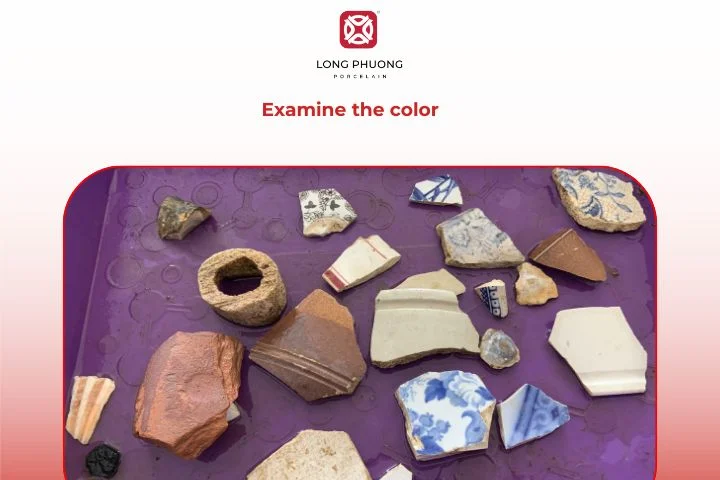
3.3. Study the decorative patterns
Designs and motifs are vital clues. The geometric shapes of early Greek pottery, lotus patterns of Chinese porcelain, or engraved dragons of the Ming era each reflect distinct time periods and artistic traditions. The pottery identification guide approach often combines stylistic analysis with historical comparison.

3.4. Use scientific analysis
Modern experts use advanced technologies to confirm authenticity:
- Thermoluminescence (TL) testing measures the time since the piece was last fired.
- X-ray fluorescence (XRF) identifies the chemical composition of glazes.
- Microscopic analysis detects tool marks or modern restoration work.

When in doubt, combine visual observation with scientific verification — a rule every detailed pottery identification guide emphasizes.
4. Video tutorial: How to identify valuable ancient ceramics
See more: why ming porcelain remains a symbol of chinese craftsmanship
5. Key factors that determine the value of ancient pottery
Identifying a piece is the first step; assessing its value is the next. Market worth is determined by a few crucial factors, all of which rely on the initial assessment provided by a rigorous pottery identification guide.
5.1. Shape and form
Does the shape represent a rare or particularly well-executed form from that historical period? Exceptional craftsmanship and aesthetic appeal (symmetry, elegance of form) significantly increase value.

A finely potted vessel with a desirable, rare silhouette will command a higher price than a utilitarian, common piece.
5.2. Surface and glaze condition
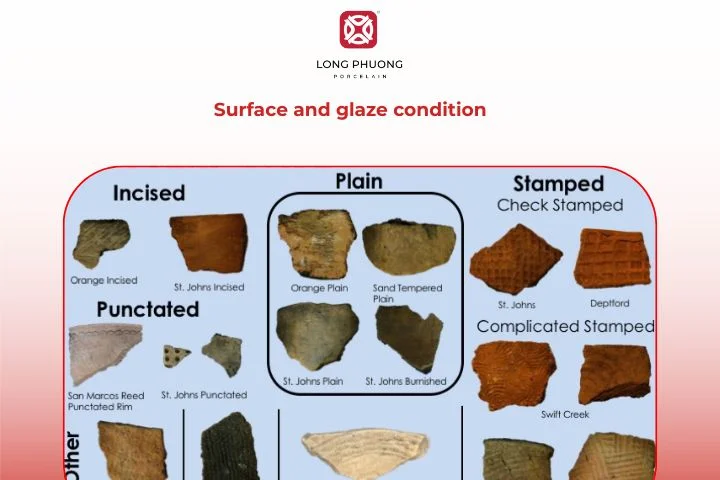
Collectors value pottery with intact glazes and minimal restoration. A natural patina or subtle signs of wear often enhance authenticity and appeal.
5.3. Integrity and completeness

- Completeness: Is it a whole piece or a fragment? Complete objects are exponentially more valuable.
- Rarity: Was it a mass-produced item or a limited-run piece, perhaps commissioned for the imperial court? Rare forms, colors, or motifs are extremely valuable.
- Provenance: This is the documented history of ownership. A piece that was once in a famous collection or excavated from a known, authenticated site (clear provenance) is far more valuable than a piece with an unknown history. Provenance is arguably the most important factor in this pottery identification guide.
5.4. Age and historical period

Pottery from well-known dynasties or empires such as the Han, Tang, or Roman Empire is more desirable due to historical significance and limited supply. Pieces that mark a significant technological or artistic breakthrough such as the invention of true porcelain, also hold a premium value in any serious pottery identification guide
6. FAQs
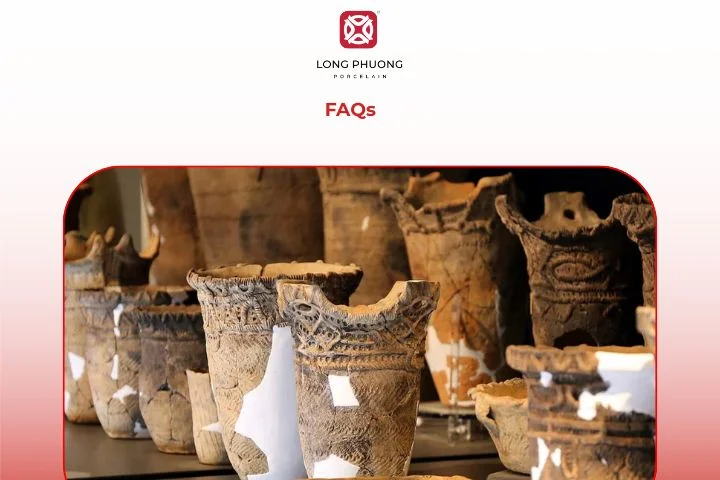
6.1. Is there an app that identifies pottery?
Yes, several mobile apps use image recognition and online databases to identify pottery marks. However, their accuracy varies. For reliable results, pair these tools with a professional pottery identification guide or expert consultation.
6.2. How to identify Qing dynasty porcelain?
Identifying genuine Qing Dynasty porcelain (1644–1912) involves checking several key attributes:
– Reign Marks: Look for the six-character (e.g., Da Qing Qianlong Nian Zhi) or four-character reign mark, usually painted in underglaze blue or overglaze iron red. Be aware of the common practice of using apocryphal marks from earlier emperors (e.g., Chenghua).
– Foot Rim: Early Qing pieces often have a rounded, concave foot rim, while later pieces can have a straighter, flattened rim and a recessed (sunken) base.
– Glaze and Body: The glaze often has a slightly bluish tinge. The body paste should be fine, hard, and translucent.
– Decorative Style: Look for the characteristic color palettes like the Famille Verte (Kangxi period) and the development of the vibrant Famille Rose (Yongzheng and later periods).
6.3. What are the 4 S’s in ceramics?
The “4 S’s” in ceramics is a mnemonic device used in pottery classes to remember the essential steps for joining two pieces of leather-hard clay securely:
– Score: Scratching cross-hatches into both surfaces to be joined.
– Slip: Applying a thin layer of clay mixed with water (slip) over the scored area.
– Stick: Pressing the two pieces firmly together.
– Smooth: Blending the seam to ensure a strong, integrated bond.
6.4. Is there a pottery Marks database online?
Yes. Museums and auction houses host comprehensive databases, and many pottery identification guides list the most trusted references for collectors.
7. Where to find authentic and quality pottery pieces?
If you’re inspired to begin collecting or wish to explore fine ceramic craftsmanship, start with reputable and transparent sources. Visit museums, certified antique shops, or trusted manufacturers that uphold authenticity and craftsmanship.

In Vietnam and across Asia, Long Phuong Porcelain stands out as a respected name offering both traditional and modern porcelain collections. Known for quality, artistry, and direct factory pricing, Long Phuong’s products blend cultural heritage with refined design — ideal for collectors, hotels, and restaurants seeking timeless elegance.
Related Posts
- What is a ceramic kiln and how does it work?
- Top trends in ceramic home decor for modern living spaces
- Famous ceramic artists and their artware creations
- The beauty of natural glaze in bizen pottery
- How ceramic processing impacts quality and durability
- The history and beauty of vietnamese ceramics
Long Phuong Group Joint Stock Company
- Phone number: (+84) 989 595 866
- Email: export@longphuong.vn
- Factory: Hap Linh Industrial Cluster, Hap Linh, Bac Ninh, Vietnam
- Showroom Ha Noi: 59 Cua Bac, Ba Dinh Ward, Hanoi, Vietnam
- Showroom Ha Noi: 37 Cua Nam, Cua Nam Ward, Hanoi, Vietnam
- Showroom TP. Ho Chi Minh: 127 Le Thi Rieng, Ben Thanh Ward, Ho Chi Minh, Vietnam
CEO of Long Phuong Group Joint Stock Company, with more than 20 years of exploration and research to obtain the best formulas and professional experience, Long Phuong Porcelain has produced more than 400 designs of all kinds of household porcelain, Significant contributions to Vietnam's ceramic industry.
 Vietnam
Vietnam
